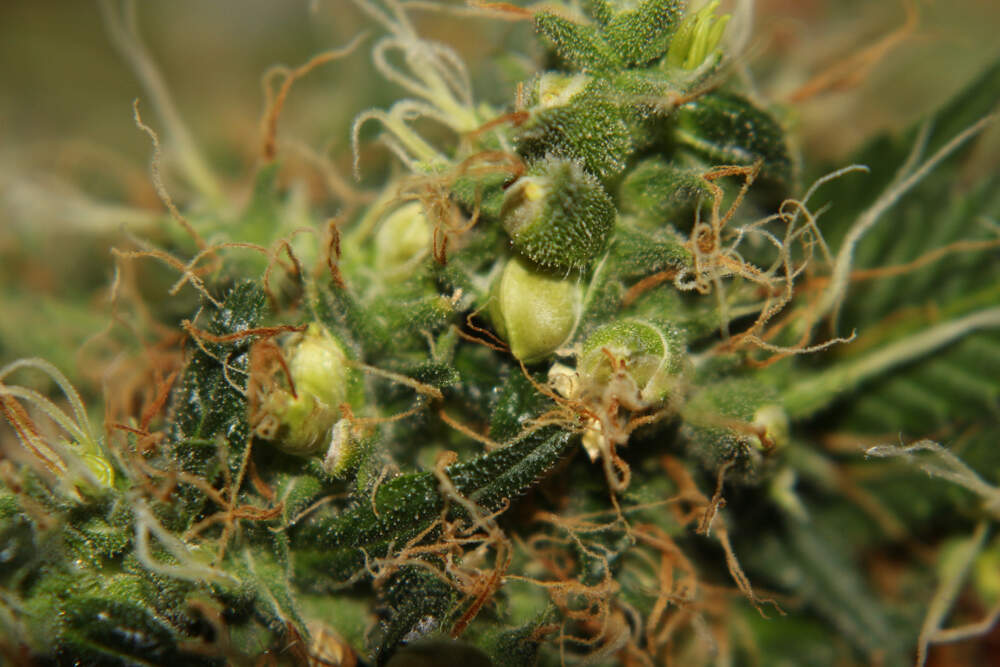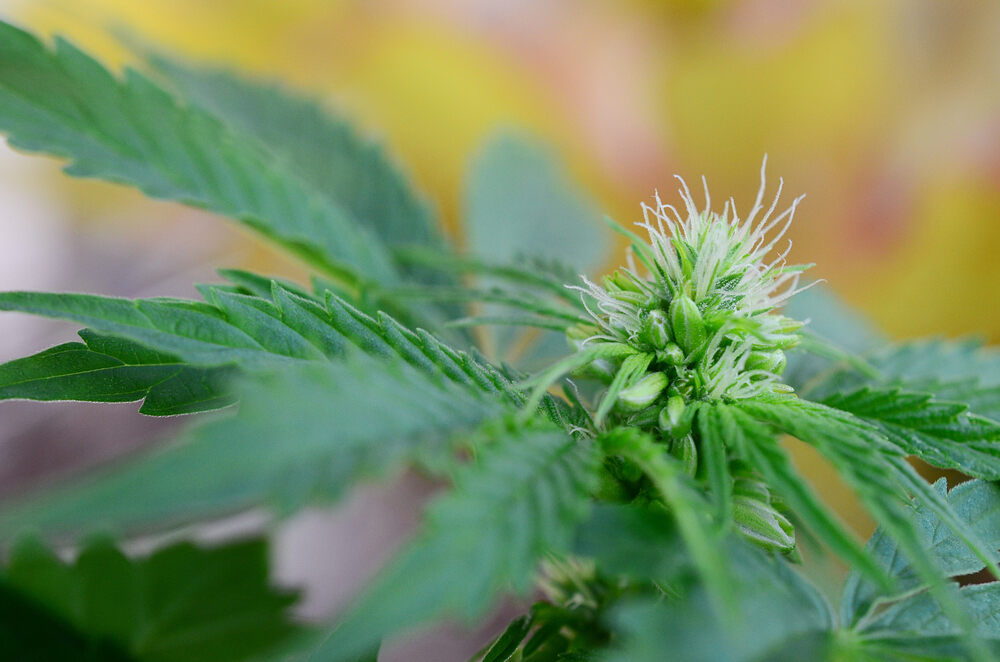The Best Fluffy Pancakes recipe you will fall in love with. Full of tips and tricks to help you make the best pancakes.

How to Identify a Hermie Cannabis Plant?
Growing your own weed can be one of the most satisfying experiences, but every now and then, you might encounter a tricky issue—hermaphrodite (or hermie) plants. These are marijuana plants that develop both male and female reproductive organs, and if left unchecked, they can mess up your crop by producing seeds instead of the high-quality buds you’re after. So, how do you identify and handle a hermie plant? Let’s dive into it.
What is a Hermie Cannabis Plant?

A hermie plant is basically a marijuana plant that’s trying to do it all—grow both male and female reproductive parts. This can be a headache for growers, as these plants can pollinate themselves and others, leading to buds filled with seeds instead of potent, THC-packed flowers.
Definition of Hermaphroditism in Cannabis
Hermaphroditism in cannabis is when a plant develops both male pollen sacs and female pistils. This happens when the plant is stressed or has certain genetic predispositions. Stress factors like light leaks, extreme temperatures, or even physical damage can trigger a plant to “herm out.”
Why Hermie Plants are a Concern for Growers
Hermie plants can pollinate your entire crop. When this happens, the female plants stop focusing on growth and growing juicy buds and instead start producing seeds. The result? A lower-quality, seedy yield. No one wants that. As soon as you identify a hermie, you’ve got to act fast to prevent pollination from spreading.
Common Causes of Hermaphroditism in Cannabis
Cannabis plants, like humans, don’t always handle stress well. And when they’re stressed, they can flip genders. There are a few common culprits that lead to hermie plants.
Stress Factors: Light Leaks, Temperature Fluctuations, and Physical Damage
Light leaks during the flowering stage can confuse a plant, making it think it’s back in the vegetative growth phase. Consistent darkness is key during flowering. Temperature fluctuations, particularly heat stress, can also push your plant to herm out. Lastly, physical damage like aggressive pruning or broken branches can lead to hermaphroditism, especially if it happens late in the plant’s life cycle.
Genetic Factors: Strain Susceptibility
Some strains are just more prone to turning hermie than others. If you’re growing from seeds with unstable genetics, especially if they’re from a hermie plant, you’re more likely to face this issue. That’s why it’s so important to start with stable, high-quality marijuana seeds from trusted breeders.
Nutrient Deficiencies and Overwatering
Plants stressed from nutrient deficiencies or being overwatered are at higher risk of becoming hermaphrodites. Keeping your grow space balanced with proper feeding and watering routines is key to avoiding these problems.
How to Identify a Hermie Cannabis Plant Early
Catching a hermie plant early can save your entire crop from disaster. Here’s what to look out for.
Recognizing Male and Female Characteristics on the Same Plant
One of the telltale signs of a hermie plant is seeing both male pollen sacs and female pistils on the same plant. The pollen sacs will look like small, round balls, often at the nodes where the branches meet the stem, while the female pistils are those white, hair-like structures that signal the plant is entering the flowering stage.
Signs to Watch for During the Flowering Stage
During the flowering stage, you want to keep an eye out for any pollen sacs or “bananas” (nanners). These nanners are small, yellow, banana-shaped structures that can appear within the buds and release pollen, often much faster than normal male sacs. Spotting these early is essential to maintain your plant’s quality and avoid pollination.
Differences Between Pollen Sacs, Bananas, and Female Flowers
Pollen sacs look like round little balls that take a while to open and release pollen. Bananas, on the other hand, are sneaky—these yellow, elongated structures appear directly in the buds and can release pollen almost immediately. Female flowers are identifiable by their white pistils and don’t cause any problems unless they’re alongside male reproductive parts.
Steps to Take After Identifying a Hermie Plant
Once you’ve spotted a hermie, it’s decision time. You can either carefully remove the pollen sacs or say goodbye to the plant entirely.
Removing Pollen Sacs and Bananas: A Delicate Process
If it’s your only plant or you’re attached to it, you can try manually removing the pollen sacs and bananas with sterilized tweezers. This requires daily inspection because new sacs can appear throughout the flowering stage. Be super careful to avoid rupturing any sacs and spreading pollen.
Isolating or Removing Affected Plants to Prevent Pollination
If you’ve got other plants nearby, it’s best to remove the hermie from the grow area completely. If you’re growing multiple plants and one goes hermie, isolating it can save the rest of your crop from becoming pollinated and producing seeds.
Adjusting Environmental Factors to Prevent Further Hermaphroditism
Once you’ve removed the hermie, check the grow environment. Are there light leaks? Are the temperatures fluctuating too much? Fixing these issues will reduce stress on your remaining plants and prevent them from following the same hermie path.
Preventing Hermaphroditism in Cannabis Plants
Now that you know how to handle a hermie plant, let’s talk prevention. It’s always better to prevent the issue before it happens.
Choosing Stable Genetics for Growing
Start by choosing seeds from reputable breeders who have a track record of stable genetics. Feminized seeds are also a great option to minimize the chances of growing male or hermie plants.
Optimizing Grow Conditions: Temperature, Light, and Humidity Control
Keep a stable environment with consistent light cycles, proper temperature control (keep it under 85°F), and ideal humidity levels. Stress is the biggest trigger for hermaphroditism, so you want to create the most stress-free environment possible for your plants.
Best Practices for Stress Reduction in Cannabis Cultivation
Avoid aggressive pruning, topping, or training during the flowering stage. If you need to make adjustments, do them early in the vegetative stage. Ensure that your plants are well-fed with the right nutrients, and don’t overwater them. It’s all about balance.
FAQ
What are the first signs of a hermie plant?
Look for both pollen sacs (small green balls) and female pistils on the same plant. Pollen sacs often appear at the nodes, while pistils are white, hair-like structures.
Can you fix a hermie cannabis plant?
You can try removing pollen sacs and bananas, but there’s no guaranteed fix. Isolation and careful management are key to avoiding pollination.
How does light stress cause hermaphroditism?
Light leaks during the flowering phase confuse the plant’s growth cycle, causing it to develop both male and female parts as a stress response.
What are ‘bananas’ on a hermie plant?
Bananas (nanners) are yellow, elongated structures that appear in buds. Unlike pollen sacs, they release pollen almost immediately.
How do I prevent hermie plants in the future?
Choose stable genetics, control light cycles, maintain a stress-free environment, and manage temperature and humidity to avoid hermaphroditism.
Dealing with hermie plants can be frustrating, but if you catch them early and know how to handle the situation, you can save your crop from going to seed. Prevention is your best friend—start with solid genetics, create a stress-free growing environment, and keep a close eye on your plants throughout their life cycle. Grow smart, and you’ll be reaping beautiful, seedless buds in no time!
